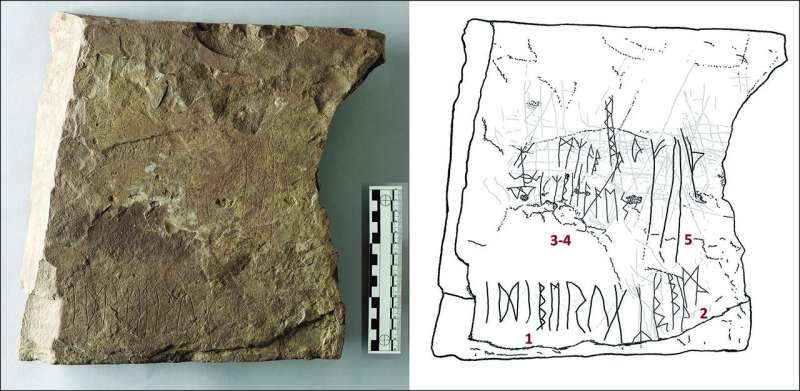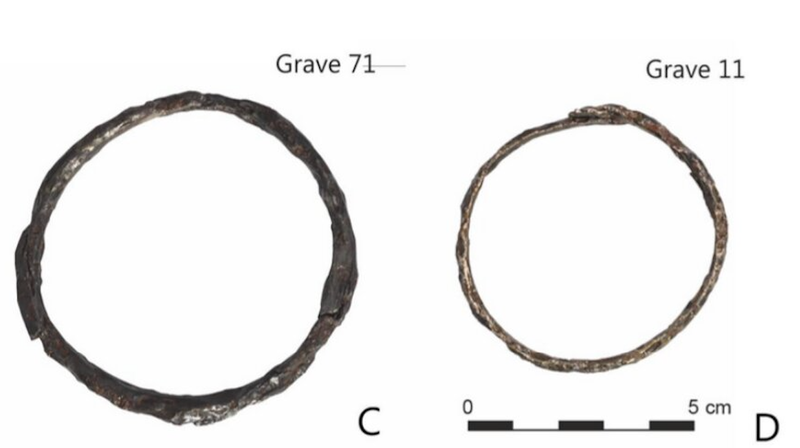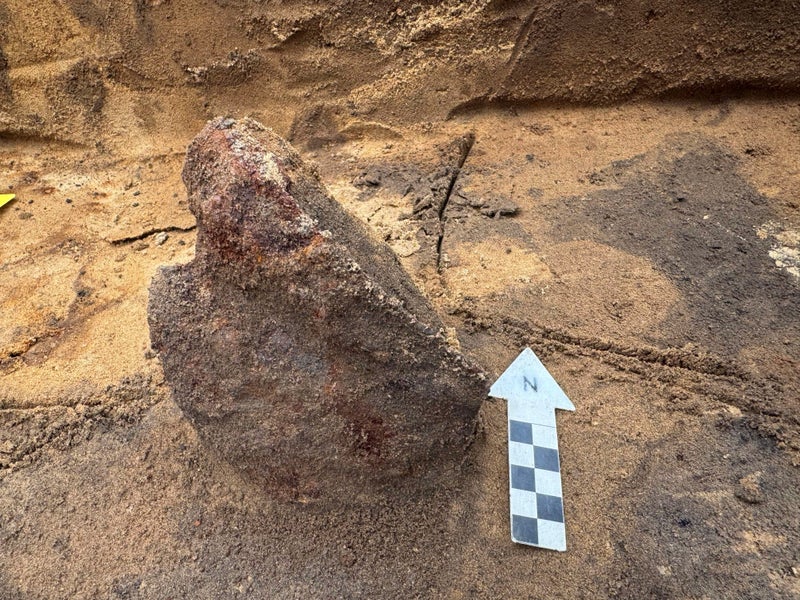Marks predate invention of wheel by thousands of years. Archaeologists in New Mexico have uncovered what could be trace marks left by the oldest known hand-drawn carts, predating the invention of the wheel by thousands of years. Recent research has raised questions about the exact time and place humans began widely using the wheel, with one study pointing to its invention by eastern European copper miners as early as 3900BC.
![[Drag marks could be evidence of oldest known human-made vehicle]](https://static.independent.co.uk/2025/02/25/7/42/Drag-marks-could-be-evidence-of-oldest-known-human-made-vehicle.jpeg)
In the time before the invention of the wheel, early humans used sledges, made from a load-bearing frame fastened by a harness, to move goods. One such sledge, made by tying two wooden poles together and pulled by hand or a horse, was used by indigenous North Americans well into the 20th century. However, ancient versions of this sledge, called travois, have rotted away without leaving any record in written histories.
“Although these devices likely played vital roles in the lives of ancient peoples,” the researchers noted, “they have low preservation potential in the archaeological record.”. Now, archaeologists digging in New Mexico’s White Sands have found what seem to be nearly 22,000-year-old drag marks made by the ends of wooden poles.
The White Sands National Park archaeological site is home to fossil footprints that are likely the oldest direct evidence of human presence in the Americas. The drag marks show evidence of movement across the ground by a tool consistent with a stick or a pole made of wood, the archaeologists said.
Some of these marks preserved in dried mud occur as two parallel, equidistant traces extending for dozens of metres with barefoot human tracks along their length. The findings, published recently in the journal Quaternary Science Advances, suggest early humans dragged their travois over as they went along.
“Here we report linear features associated with human footprints, some of which are dated to about 22,000 years ago, preserved in fine-grained sediments at White Sands National Park,” the researchers said. The most plausible explanation for the trace fossils, researchers said, is that they were “drag marks formed by travois consisting of a single pole or crossed poles pulled by humans”.
They suspect the travois was likely used to transport resources, making the latest discovery a “unique footprint record” representing “one of the earliest pieces of evidence for the use of transport technology”. “Our research team has spent many hours discussing the possible origins of these linear features with the Indigenous people involved in our research as collaborators,” researchers wrote, adding that “the most likely explanation” of the marks is that they were made by “some form of travois”.































